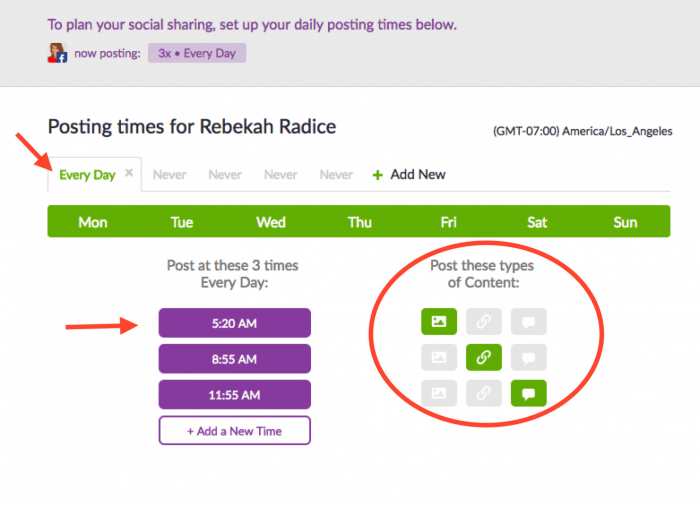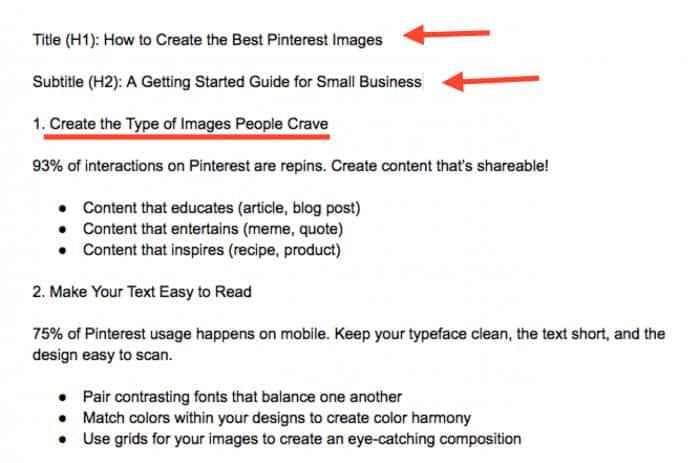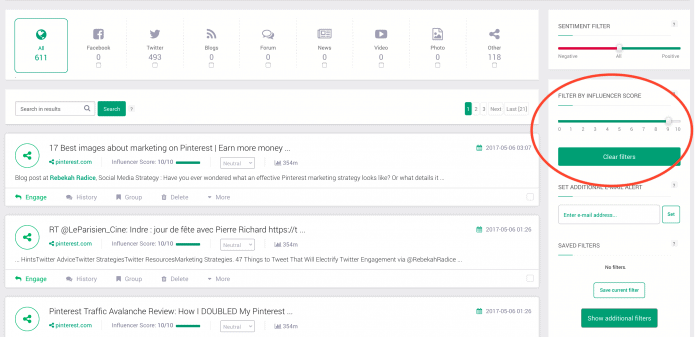How do you define social media success? Have you identified what that looks like for your business? Because, as you can imagine, success is subjective. It can also feel elusive when you're getting started.
But don't let that scare you. Even when you have no idea what you're doing, you can still create success on social media. I recently launched "Social Media Mastery: A Comprehensive Guide to Social Media Success."
In it, I shared the processes, systems, and tools I've tweaked and perfected in my own business over the years. And believe me, since hopping on social media in 2004 - I've learned a lot!
Below are a handful of those ideas you can use to create momentum and build buzz around your business today.
1. Choose the right type of content
No matter how interesting your content might be, getting people to engage with it can be a challenge. And if you want them to share it, it has to be the right type of content.
Sharing the right type of content will help:
- Prospects begin to recognize you as the “go-to” resource.
- Build trust, which translates into trust for your brand and product. It makes you a top choice when they decide to invest in you or your competition.
- Attracts visitors to your site, some of whom may turn into leads, prospects, and buyers.
If your audience likes your content, they'll like, comment, and share it with others. Both are key to growing a loyal following and a successful online presence.
Let’s break down several different forms of content and then I'll share a quick strategy to increase engagement.
- Blog content
- Vlogs (video blogs)
- Social bookmarking
- Webinars
- Video tutorials
- Ebooks
- Case studies
- Infographics
- Reports
- White papers
Now let's take that content and use it in a strategic way to boost conversation and interaction. The idea is to share two types of content:
- Hook your audience (make them want to come back for more), and
- Increase engagement through interesting, entertaining, and intriguing content
This is your chum and baited hook. Your chum content is engaging visual content that gets a lot of engagement and clicks. This type of content attracts an audience. It can be a viral photo or a funny meme - anything that's interesting to your audience.
This type of content is important for Facebook because it's sending signals about the type of content that a person wants. Each time they engage with that content, Facebook says, "Hey, this person wants to see more of that." Now you start showing up more in the Facebook News Feed.
Your baited hook content links back to your blog, landing pages, and/or website. Examples of these would be your blog posts, infographics, ebooks, tutorials, videos, etc. Those baited hooks are what turn people into customers.
Here’s what a schedule like this might look like. Using automation, you can flip between images, links (evergreen content), and text-based posts with ease.

2. Tap into the power of video
It’s no secret that video is hot across social media, but what most don’t consider is the multitude of ways you can use it. First, there's Facebook. From the native video (uploaded to Facebook) to Facebook Live - you can't open your feed without seeing one. Then there's Twitter. One of the most under-utilized networks for video.
Did you know: 82% of Twitter users watch video content, and a whopping 90% of those people are viewing from mobile? Startling numbers, don't you think? Native video has always performed well on Twitter. Those are the videos you see uploaded and shared from a tweet.
How to Create Highly Shareable Pinterest Images (in a SNAP!) #INFOGRAPHIC #SMM https://t.co/HnngrmcHcJ pic.twitter.com/S6FCEt0f0z
— Rebekah Radice (@RebekahRadice) May 22, 2017
But with the integration of Periscope, you now have live streaming video.
Need a better #socialmedia strategy? Loved joining @jeffsieh on his show! Catch the replay? https://t.co/2J7gQMfzmP pic.twitter.com/zA3fUkg3n9
— Rebekah Radice (@RebekahRadice) May 24, 2017
In Q4 of 2016, the Twitter audience watched 6.6 million hours of live video through Periscope. Think about that. It's the equivalent of 275,000 days (753.4 years), or 1.027 months. Enough time to binge-watch the top 10 shows on Netflix. But let's stay focused. No couch time for you, at least not yet.
To use video on Twitter, turn your content into:
- Behind the scenes videos
- Videos of how to use your product
- Insider secrets
- Live video tips
There's no doubt that Facebook has big plans for video. That means putting Facebook video on your radar is important. Believe it or not, Facebook video receives 135% more organic reach than a Facebook photo. And 73% of B2B marketers say video positively impacts marketing ROI. To use video on Facebook, don’t create any video content, create quality video content that connects with your audience.
- Tell your story
- Get animated
- Use thought-provoking questions
Types of questions you should ask (and then answer)
- Fill in the blank. If you're a Travel Expert, ask, “If I could go anywhere in the world, I’d go to ______________”
- Trending topics. If you're a Sports Expert, ask “Who are you cheering for in the upcoming finals?”
- Business-related questions. If you're a Productivity Expert, ask “What’s your favorite tool for increasing your productivity?”
- Product preferences. If you have a SaaS product, show features and ask your fans which they'd prefer or like most.
- Opinions on a trending topic. No matter the industry, you can find a topic that's currently trending. Talk about the post, give your opinion, and ask your fans a question about the topic.
YouTube
Incredible to think that over 500 million hours of video get consumed on YouTube every day. And there are so many ways you can use YouTube in your business. Create a how-to video from one of your older blog posts and you've breathed new life into that post. Or how about using tips on how to use features within your product? People love to see demonstrations, especially when they show and don't tell.
3. Get creative with visual content
Visual content always performs well on social media. And it's easy to see why. As humans, we have an amazing capacity to remember pictures. Hear a piece of information, and three days later, you'll remember 10% of it. Add a picture and you'll remember 65%. This means that even if your link and text posts aren’t performing, you can boost engagement with visual content.
Here are a few tips:
Create infographics
Have an interesting article or social post that you could turn into a long-form graphic? Grab 3-5 bullet points and turn them into a visual story. Here's an example of how we do that weekly:

Steps to create your infographic
- Go to your Google Analytics - Behavior - Site Content - find your top-performing content or you can use this same formula for new blog posts.
- Create a title for your Infographic - we typically do title and subtitle (H1 and H2).
- Break your top points into bite-sized pieces. We use numbers, bullet points, elements, and, statistics to draw the eye, break us the design, and keep people interested and engaged.
- Hand over to your designer or head over to Canva and create one on your own. Use their Infographics template to drag and drop your content in.
Share video tutorials
A strategy that I've incorporated for years is short video tutorials. They're easy to create, even if you have no idea what you're doing.
Step 1: I'm assuming that you're a content creator already. You probably have years of content you've created and forgotten all about. Once again, go to your Google Analytics - Behavior - Site Content and find top-performing content. This is content that continues to drive traffic to your blog.
Step 2: Pull 3 points from that post and head over to Google Docs or your favorite editor. Write a very short script. You don’t need to detail everything, only enough to jog your memory and keep you on track.
Step 3: Go to Google Drive, choose “New” - “Google Slides.” You’re going to set up 4 slides:
- Your title slide
- First bullet point
- Second bullet point
- Third bullet point

Step 4: Open up QuickTime on Mac and choose - New Screen Recording. If you’re using Windows or like to keep everything in the cloud, I highly recommend Droplr.
Create custom images
No matter your type of post, you can always create a custom image to grab people’s attention. I’ve written and spoken a lot about this, so I won’t go into too much detail.
You can read about visual content and visual marketing in these posts. Before you hop over there, take a look at a few ideas on how to brainstorm content you can turn into visual eye candy.
- Offer an answer to a frequently asked question
- Ask a silly or off the cuff question that can easily be answered
- Give your response to a current issue
- Demonstrate a unique way others are using your product
- Share a story that makes your company/product/service relatable
- Talk about what inspires you, including your hobbies and favorite pastime
4. Choose the right timing
Timing is crucial regardless of how appealing your content may be. If you’re sharing your content at a time when most of your audience is asleep or at work, there’s a huge chance your post won’t get seen. That translates into a reduction in engagement that could become detrimental. Especially when you’re trying to gain traction.
Kissmetrics analyzed how the performance of different types of social media content changes according to timing. They found that most Facebook shares occur on Saturday. Not too surprising since most people are off work and perusing their News Feed. The important thing here is that you understand your own metrics. They change from one social network to the next, so never assume. Go to Google Analytics, Twitter Analytics, and Facebook Insights to view your best times to post.

5. Use more emojis
You may find this hard to believe, but using emojis in your posts play a significant role in your social media engagement.
In fact, using emoticons can improve your share rate by 33%. Why do we love emojis so much? It makes our brain light up!
According to scientists, when a person sees an emoji, their brain lights up just as it would if you were standing in front of them. Pretty cool, right? The brain is programmed to recognize and process an emoji as an emotion. So when you send a smiley, you're sending happy vibes to that follower or fan.
6. Collaborate and engage with your audience
The great thing about social media marketing is your ability to stop speaking at your audience. Instead, you’re speaking with them. You’ve become an active participant in the conversation.
If you want to understand the needs of your customers, treat them as collaborators. Ask questions, request input and suggestions, invite them to test your product. Their insight and feedback are invaluable. And social media is the perfect platform for you to do this.
Make sure that as you use the ideas above, you engage them in conversation. Don’t leave the “social” out of “social media.” Reply to mentions and comments to keep the conversation going. You can see Sprout Social does exactly that. They ask a question and even come back to respond to Peg Fitzpatrick in the comments. ABL - always be listening!
This will build a personal connection and a stronger relationship. Many brands spend so much time creating and finding great content that they miss out on relationship-building.
Instead, use automation to track what your audience is saying about you and consistently share great content. This will free up some time to engage with your followers and build relationships.
7. Be data-informed (and driven)
In social media, almost every interaction, be it a like, click-through, or comment, is measurable. The key is using those data points to inform your team and make constant improvements. As we've discussed, you can find out what’s working and what’s not through:
- Google Analytics
- Facebook Insights
- Twitter Analytics
- Social Dashboards like Brand24

And a plethora of tools that let you take a deep dive into your results. Then take that next step and track all of your posts. If you need to know what visitors clicked on or how they arrived at your website, you can do that!
Just use UTM parameters. UTM or tracking codes will link back to Google Analytics. Now you can better understand audience behavior and create additional content that hits the mark.
Final thoughts
While there is no one-size-fits-all solution, you can find social media success if you’re armed with the right plan. Not sure where to begin? Grab a copy of my brand-new book!
It's a short but powerful read where I’m sharing my own best practices. Each one is time-tested and will produce measurable growth when done right. You’ll find the steps and tips to equip you with exactly what you need to take full advantage of all that social media has to offer.
Plus, you'll learn how to identify the right social channels for your business, when to post, and how to create content that’s appealing to your target audience.
About Rebekah Radice
Rebekah Radice, co-founder of BRIL.LA, has traded narcissism for purpose. When not driving growth, you'll find her tricking family into thinking she's Emeril Lagasse - likely covered in marinara. The spotlight was fun, but impact is better. These days she's using 20+ years of brand brilliance for good.
